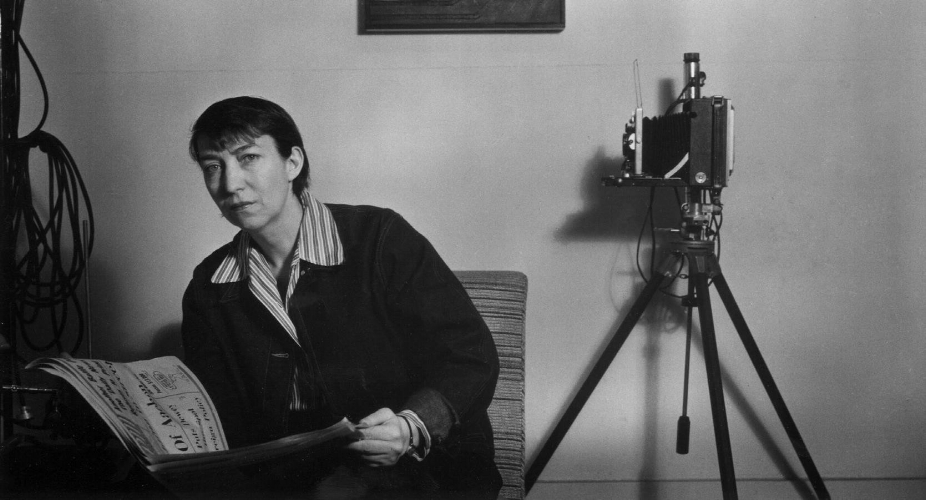Berenice Abbott
Berenice Abbot. Automat, 977 Eighth Avenue, Manhattan. 1936. New York Public Library.
Berenice Abbott (1898 - 1991). American.
Now let’s look at someone who ushered onto the world stage of two great photographers.
As a young woman, Berenice Abbott (1898 – 1991) left America to study in Paris and Berlin in 1921, landing smack in the middle of modernism’s great post-World War I surge of creativity. She took a job in 1923 as assistant to Man Ray, who taught her to photograph and allowed her to work on her own projects in his darkroom during her spare time.
(Unknown.) Berenice Abbott.
Soon she was turning her lens on the literary and artistic leaders of the era, such as Djuna Barnes, Jean Cocteau, and James Joyce, and was exhibiting her photos alongside renowned photographers Man Ray and André Kertész. Her portraiture business began picking up, and she opened her own studio in Paris in 1926.
Berenice Abbot. Theatre Drinking Fountain, Manhattan. 1938. New York Public Library.
About that same time, Man Ray introduced her to Eugène Atget, a man who had spent much of his life photographing the disappearing old Paris as urban renewal changed the cityscape forever. He made a living selling his photographs to artists who used them as visual references for their own drawings, prints, and paintings.
While Atget’s intentions had never been overtly artistic, Abbott saw, as did Man Ray, the extraordinary accomplishment of Atget’s work, and she purchased a significant part of his collection, which would eventually end up in the Museum of Modern Art in New York. Along the way, Abbott promoted the man’s photographs and published the books that helped establish his world-wide reputation as a visionary of modern photography.
Eugène Atget. Le Chateau. 1903. Metropolitan Museum of Art.
In 1929, Abbott visited New York and was taken with the extraordinary visual experience of the city, eventually closing her Parisian studio and returning to make New York her new subject. In 1935, she moved in with her gay lover, the critic Elizabeth McCaustland, who she lived with until McCausland’s death in 1965. This was also the year she was hired by the Federal Art Project, a New Deal program, which funded her continuing project which she called “Changing New York.”
Berenice Abbot. Bread Store, 259 Bleecker Street . 1937. New York Public Library.
This is the origin of the Berenice Abbott photographs you find on the Loveheadhouse web site, since the images she made under the Federal Art Project were publicly owned.
Berenice Abbot. Flat Iron Building, Manhattan. 1938. New York Public Library.
Abbott is considered an important leader in the “straight photography school,” which preferred unmanipulated images over the “painterly” style of the pictorialist photographers of the turn of the century.
She is also remembered for her preservation and promotion of the work of Atget, who would become one of the most important influences on the modernist photographers of the twentieth century.






